for my series dedicated to the Science Women, this time I would like to tell you about a great scientist, who dedicated her life to chemistry and physics and won two Nobel Prizes.
I'm talking about Marie Curie.
Maria Salomea Skłodowska, this is her first name, was born in Poland, in Warsaw, in 1867. Her great ambition was to study, but in her country women could not do it, so Marie moved to Paris and graduated. at the Sorbonne in mathematics and physics.
During a research carried out for the University she met the scholar Pierre Curie, and a deep love was born between them, which united them both in life and in studies. They lived in symbiosis, isolated from the outside world, perpetually engaged in sharing their studies and their love.
Marie continued her research and, with her husband's help, discovered radioactivity, refining the way to measure it. She discovered polonium and above all radium, and it is thanks to her that today this chemical element can be used in medicine and in the treatment of diseases such as cancer.
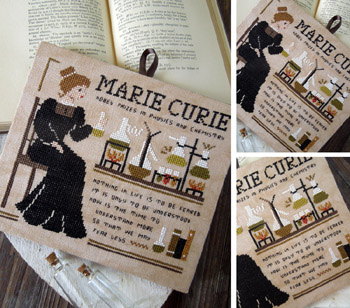
Care Ricamine,
per la mia serie dedicata alle Donne nella Scienza vorrei parlarvi questa volta di una grande scienziata, che dedicò la vita alla chimica e alla fisica e vinse due premi Nobel.
Ovviamente sto parlando di Marie Curie.
Maria Salomea Skłodowska, questo il suo nome di battesimo, nacque in Polonia, a Varsavia, nel 1867. La sua grande ambizione era studiare, ma nel suo paese d'origine le donne non potevano farlo, così Marie si trasferì a Parigi e si laureò in matematica e fisica alla Sorbona.
Durante una ricerca svolta per l'Università conobbe lo studioso Pierre Curie, e fra loro nacque un amore profondo, che li unì sia nella vita, sia negli studi. Vivevano in simbiosi, isolati dal mondo esterno, perennemente impegnati nella condivisione dei loro studi e del loro amore.
Marie continuò le sue ricerche e, con l'aiuto del marito, scoprì la radioattività, affinando il modo di misurarla. Scoprì il polonio e soprattutto il radio, ed è grazie a lei se oggi questo elemento chimico può essere usato nella medicina e nella cura di malattie come il cancro.
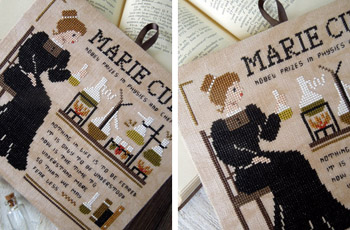
In 1906, Pierre Curie was hit by a chariot and died. Marie lived through a period of intense depression, during which however she continued to study and to hold university lessons, inheriting the chair from her Pierre and continuing from where he left off.
She lived hard during the war, offering her knowledge to aid, while the first of her daughters, Iréne, followed in her footsteps, shared her research and stood by her.
At the time of Marie, the effects of exposure to radium were not yet known, and Marie never wanted to admit that her discomfort depended on it. She loved her discovery too much to accept its danger. However, the large amount of radiation she was exposed to throughout her life made her fragile, until she became ill.
On July 4, 1934, Marie died, leaving her priceless discoveries to science.
Her daughter Iréne continued her research. She was the second woman to be awarded the Nobel Prize in Chemistry after her mother.
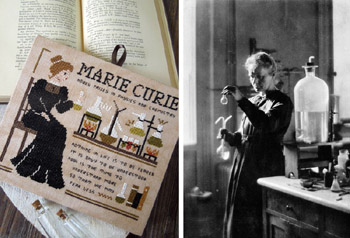
Nel 1906, Pierre Curie venne investito da un carro e morì. Marie visse un periodo di intensa depressione, durante il quale però continuò a studiare e a tenere le lezioni universitarie, ereditando la cattedra da Pierre e continuando da dove lui aveva lasciato. Visse duramente durante la guerra, offrendo in aiuto le sue conoscenze, mentre la prima delle sue figlie, Iréne, seguiva i suoi passi, condivideva le sue ricerche e le stava accanto.
All'epoca di Marie non si conoscevano ancora gli effetti dell'esposizione al radio, e Marie non volle mai ammettere che i suoi malesseri dipendessero da questo. Amava troppo la sua scoperta per accettarne la pericolosità. Tuttavia la grande quantità di radiazioni a cui fu esposta per tutta la vita la rese fragile, fino a farla ammalare.
Il 4 luglio 1934 Marie morì, lasciando in eredità alla scienza le sue scoperte inestimabili.
Sua figlia Iréne proseguì le sue ricerche. Fu la seconda donna a ottenere, dopo sua madre, il premio Nobel per la chimica.
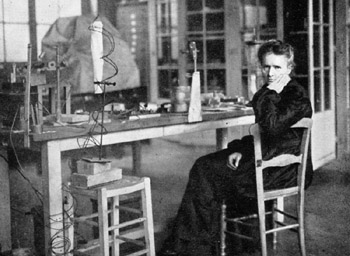
It was here to say: “Nothing in life is to be feared, it is only to be understood. Now is the time to understand more, so that we may fear less.”
A very great teaching for this time, for each of us.
È stata lei a dire: “Niente nella vita deve essere temuto, deve solo essere capito. Adesso è il momento di capire di più, così che possiamo temere di meno.”
Un grande insegnamento per questo tempo, per ognuna/o di noi.
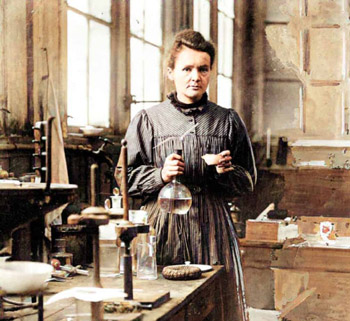
I always feel deeply grateful to these women – and to the men as well – who not only made scientific discoveries of immense value, but also sometimes sacrificed their lives for them, and for us who were born later.
I hope you love Marie Curie too, and I hope you like my own version of her, designed in my pattern.
I wish you happy holidays and... see you soon with the first patterns dedicated to Halloween!
A big hug to you all,
Laura
Mi sento sempre profondamente grata a queste donne – e anche agli uomini – che non solo hanno fatto scoperte scientifiche di immenso valore, ma talvolta hanno anche sacrificato la loro vita per esse, e per noi che siamo nati dopo.
Spero che amiate Marie Curie anche voi, e spero che vi piaccia la mia versione, disegnata per questo schema.
Vi auguro buone vacanze e... a presto, con i primi schemi dedicati ad Halloween!
Un forte abbraccio a tutte,
Laura
***
You can find my new patterns in my Etsy Shop:
or you can order them writing me an email:
Potete trovare i nuovi schemi nel mio negozio Etsy:
oppure potete ordinarli scrivendomi una mail:
